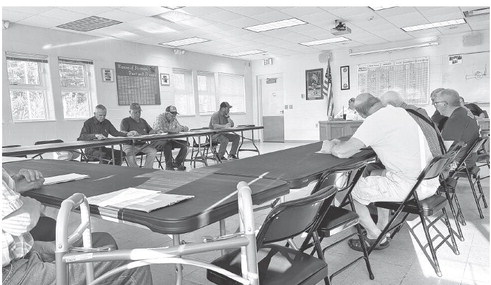The statistics show that hunter’s ed classes have made the sport safer


Wisconsin’s spring turkey season came to a close yesterday. I hope everyone enjoyed their hunt. No hunting until September 1st. And on that note, the DNR recently released the 2024 Hunter Education Annual Report.
The report covers the statistical information pertaining to the program that depends on volunteer instructors to educate future and current Wisconsin hunters to hunt safely and responsibly.
Hunter’s education in Wisconsin started in 1967 after the 1966 season ended with 264 hunting incidents. The hunter education program, passed by the legislature, required that anyone born on or after Jan. 1, 1973, needed to successfully complete a hunter education course to purchase a hunting license.
Other states, like Colorado, required that anyone born on or after January 1, 1949 complete a hunter education class prior to purchasing a hunting license. For many year’s this drove the adult male Wisconsin hunter education census.
The proof requiring hunters of a certain age to pass a hunter’s education class bears itself out in statistics. The 2024 hunting season saw only eight (8) firearm incidents with no fatalities. A 97% decrease since 1966. Today, hunting rates are significantly safer than golf.
Each year an estimated 40,000 golfers end up in an emergency room after a ball or club struck them. Just under ten show up in an emergency room from lightning strikes. And we need to add 15,000 more from injuries just getting around the course. Golf related deaths occur each year from the above causes along with attacks by alligators, venomous creatures, and drowning.
Society’s value on safety increased dramatically since 1966. Removing lawn Jarts from the market an example. Some suggest that 1.3 million lawyers in the U.S. had more to do with that than societal common sense. Yet any of us that ever played a game of Jarts or flung one around recognized the need to keep their wits about them when one flew through the air. And consider that at events where Jarts were played often involved alcohol. If you’re too young to know what Jarts were – they look like ninja weapons with weighted spear tips.
Statistics from other states prove the success and track record of hunter’s education reducing hunting related incidents. Hunters practicing safe hunting results from learning safe hunting practices. Clearly if shown how to hunt safely, hunters desire to do so. Wisconsin possesses the ability to enjoy an incident free hunting season.
All eight of the 2024 hunting incidents resulted from a failure to follow one or more of the four main safety rules. All taught on the first class of hunter’s education. Several options exist today for an individual to take a hunter’s ed class. The traditions class, an internet with field day version, and an online only class. The online only version exists for individuals 18 years of age or older. The other two versions exist for individuals of any age. No surprise that 12 year old students remain the largest group of hunter’s ed students, but a student as young as seven took a class and the oldest was 80 years old. The average age of an adult student is 36 years of age and 30 percent of the graduates were female. In 2024, 22,525 people successfully completed a hunter’s education class, and 60 percent went on to purchase their first hunting license in Wisconsin. Seventy-two percent of those graduates took one of the 509 traditional in-person multiday classes. A total of 777 hunter’s ed classes were offered by the state’s 2,800 active volunteer instructors and apprentice instructors. Last year, 503 new instructors were certified in the state. The average age of a new instructor is 42 years of age. The average age of an existing instructor is 53 with 11 years of service.
Our local instructor group has not seen an apprentice instructor in several years. Only three instructors are younger than 53 years of age. Of those older than 53, some are close to retirement and the number of years of service greatly exceeds 11.
Hunter’s ed throughout the state remains strong, yet in our local area the reality sits very close to not having enough instructors to run a course for 25 students. Currently more than that isn’t feasible. A far cry from the 65 to 100 students the class graduated a decade ago. In the words of a past instructor, “Not everyone can be a hunter’s ed instructor. We’re the white knights!” We all got a laugh at that.
We could use a few more white knights right now.
THROUGH A
DECOY’S
E
YE
BY
CHUCK K OLAR LOCAL OUTDOORSMAN


